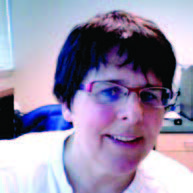 For many people, tis not at all the season to be jolly. Rather, the holiday season can be fraught with depression, loneliness and isolation. For some people, the holidays represent everything that is wrong with their lives—separation from family, the absence of friends who have passed, or just bad memories. For some, the antidote is to hole up at home until the holidays are over. Here’s another option: If you can’t be happy, think happy. Research into the science of happiness has shown that essential brain patterns change just by thinking happy thoughts. Feeling happy is not a requirement.
For many people, tis not at all the season to be jolly. Rather, the holiday season can be fraught with depression, loneliness and isolation. For some people, the holidays represent everything that is wrong with their lives—separation from family, the absence of friends who have passed, or just bad memories. For some, the antidote is to hole up at home until the holidays are over. Here’s another option: If you can’t be happy, think happy. Research into the science of happiness has shown that essential brain patterns change just by thinking happy thoughts. Feeling happy is not a requirement.
The science of happiness is part of a relatively new field known as positive psychology. Much of psychology focuses on the negatives, such as depression and how to treat it. Positive psychology focuses on the aspects of human emotion and psychology that work well, and strives to understand how to replicate and encourage these elements.
Researchers in positive psychology have studied the brain’s activity in relation to happiness. The left side of the brain is more active when people feel happy, and the right side when people are sad. Determining ways to activate the left side is one important aspect of the research.
Related to the science of happiness is the science of gratitude. Cultivating an attitude of gratitude will improve health, and also leads to improvements in relationships, academics and work. Similar to “just think happy,” the simple act of describing something one is grateful for leads to increases in positive emotions.
Although many people think that happiness is influenced most by our external environment—such as our job satisfaction, income, or social network—in fact, that only represents 10% of the influence on our happiness. Fifty percent is our DNA. We can’t always control our environment, and we certainly can’t control our DNA, but the remaining 40% may be in our power to control.
Researchers in this field have additionally found ways to cultivate this portion. These include simple suggestions, such as walking like you’re happy, sitting upright, or striking up a conversation with a stranger. Writing down both positive and negative thoughts can help as well. Write down those negative thoughts (such as “I’m ugly,” “No one loves me,” “My boss has it in for me”) and toss them away. The physical act of throwing away your worries can lessen their hold on you.
Alternatively, write down things that make you happy and grateful. The calling forth of things big and small that make you grateful (such as “I am healthy,” “I am grateful that I caught the bus,” “I am grateful I met my friend today,” “I am grateful there was no line at the store”) can make a person happier. Research has shown that keeping a gratitude journal, just one thought a day, can make a person happier. It changes those brain waves. So, before you let the holiday glum take hold, remember you don’t need to be happy, just think happy. My prescription for the season is to think 3 happy thoughts a day, and go to sleep with a smile.
A final word to my readers: While I’ve enjoyed my stint as a writer for the San Francisco Bay Times, my research and work life have gotten very busy, and sadly I must turn this column over to another. Wishing you all good health!
Dr. Naomi Jay is a nurse practitioner in the department of Infectious Disease at UCSF.
Recent Comments